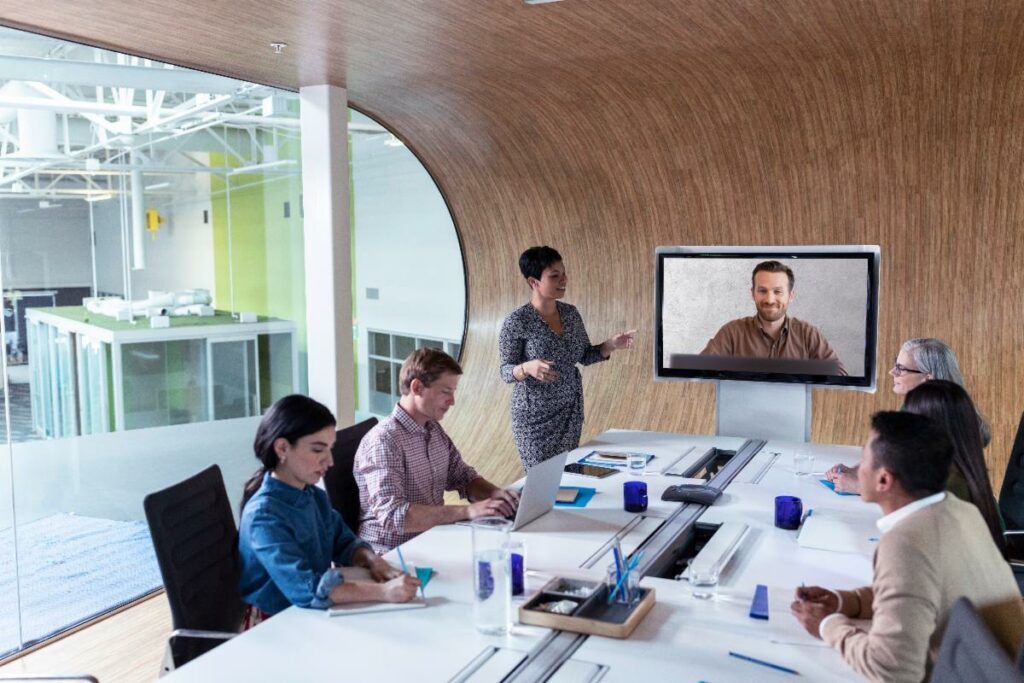
JOHANNESBURG, South Africa, August 13, 2021 -/African Media Agency(AMA)/- Imagine this: The sound of people working is constantly punctuated by the screech-and-scratch of dot matrix printers and the beeping of fax machines. Mobile phones are only just becoming popular, and are not yet smart.
In fact, professionals are more likely to engage in a quick game of Snake than manage a full productivity suite via their AI-enabled smartphones. Conference calls involve groups huddled around a speaker in a boardroom, instead of teams having discussions in full high-definition via their company-issued laptops.
Join our WhatsApp ChannelSound far-fetched? This was the office of the early 2000s, a mere twenty years ago, when the world of work looked vastly different to the high-tech one we enjoy today.
Radical changes at work
According to Shiraz Khota, Sales Director at SAP SuccessFactors, the past twenty years of work hold valuable lessons for what we can expect from our future work lives.
“The proliferation of technologies and innovation, combined with the rise of the Experience Economy continue to radically change modern workplaces, with far-reaching consequences for organisations, their HR teams, and the talented employees they hope to attract and retain. While it is true that we live in a time of ongoing uncertainty, there are important insights we can gain from the past twenty years that could help organisations and professionals alike better plan for the immediate future.”

Many of the technologies we take for granted in our day-to-day work lives were developed over the past 10 to 20 years, including Skype in 2003, Gmail and Facebook in 2004, Twitter in 2006 and the iPhone, the world’s first true mainstream smartphone, in 2007.
“The pace of technological change is accelerating to the extent that, in a few years’ time, we may look back at today in much the same way as we now look back at the early 2000s,” says Khota. “As the pandemic continues to disrupt normal notions of work and team management, organisations are increasingly looking to technology to help them adapt to near-constant change in how they manage, support and motivate their most important asset: their employees.”
Predictions for the (near) future of work
So what can organisations – and their employees – expect from the near-future of work? According to Khota, the following four trends may be commonplace before the end of this decade:
1. Offices without borders
Perhaps an obvious one considering the pandemic-forced switch to remote and hybrid work models, but all indications are that the borders between work and life will continue to disappear.
“The digitisation of work processes is continuing at a rapid pace at 84% of employers in a recent global study, with a key focus of enabling their workforce to operate remotely. The mass adoption of online collaboration and productivity tools means more people than ever are able to perform their work duties outside the confines of the office.”
According to the WEF, four in ten organisations plan to expand their use of contractors for task-specialised work. “Managing a hybrid workforce effectively will require new processes and technologies to support those processes,” explains Khota.
“As the lines between personal and professional lives continue to be blurred, and increasing numbers of highly skilled workers operate from remote locations, organisations will be challenged to implement appropriate tools and technologies to support their workers while ensuring alignment with corporate culture.”

2. Greater diversity
With the rise of borderless offices also comes the concept of borderless talent pools. “Despite the halt on global business travel due to the pandemic, we continue to work and live in a global village, with organisations able to tap into a global talent pool of skills to fill key positions. High-performance teams are increasingly diverse – in fact, studies have shown that ethnically diverse companies are 35% more likely to outperform their less diverse peers.”
Enabling greater diversity within organisational teams is also key to driving productivity and performance within the organisation. “Belonging – a key component of inclusion – and engagement at work are highly correlated,” says Khota. “Studies have found that 91% of employees that feel they belong are engaged in their work, compared to only 20% of those that don’t feel they belong.”
In addition to implementing appropriate policies and processes to encourage greater diversity and inclusion at the workplace, organisations will need to invest in appropriate technologies to ensure they stay abreast of the multitude of expectations and needs of their diverse workforce.
3. Focus on experience
The concept of employee experience came to the fore in recent years, as the Experience Economy truly took hold of personal and professional lives around the world.
“Experience management is arguably one of the most powerful tools for building relationships with customers and employees of the past decade. As the digitisation of every aspect of our personal and professional lives continues unabated, being able to track, measure and make adjustments to that experience will be invaluable to businesses’ success.”
Modern employee experience management tools will become standard in our future workplaces – and for good reason, according to Khota. “Studies have shown that organisations that invest most heavily in employee experience are more than twice as likely to be on the Forbes list of the World’s Most Innovative Companies, and appear more than eleven times for often in Glassdoor’s Best Places to Work. In fact, companies that invest in employee experience are four times more profitable than those that don’t.”
As organisations become intelligent enterprises – defined as organisations that use intelligent technologies and a connected network to their advantage – their ability to combine operational and experience data increases. “The most successful and innovative companies of the future will blend operational and experience data to gain a comprehensive real-time view over the total performance of their business, and make the employee experience a key consideration in broader decision-making processes.”
4. In-house academies
According to a WEF report, there has been a four-fold increase in the numbers of individuals seeking opportunities for online learning, accompanied by a five-fold increase in employers providing online learning opportunities to their workers.
“As technology advances make increasing numbers of job roles obsolete, workers will need to be upskilled or reskilled and then deployed to new roles,” explains Khota. “Estimates are that even among job roles that won’t become obsolete in the near future, the skills needed to perform such roles will. In fact, 40% of core skills in such roles are likely to change in the next five years, and half of all employees will need reskilling.”
To ensure they have access to the skills they need, organisations will increasingly need to invest in in-house skills development. “It is highly likely that we will see a rise in-house academies, where workers can develop skills needed within their organisations and gain valuable experience that can immediately be applied to the benefit of their employers.”
For employees, this will have the dual benefit of helping them grow within their current roles while also making them more employable to the broader industry in the longer term.
“In its recent Future of Jobs 2020 report, the World Economic Forum found that 94% of business leaders expect employees to pick up new skills on the job, a major increase from 65% in 2018,” says Khota. “To win in the new world of work, employers and employees will need to engage in continuous skills development to ensure a steady supply of work-ready skills.”
Distributed by African Media Agency (AMA) on behalf of SAP Africa.
Visit the SAP News Center. Follow SAP on Twitter at @SAPNews.
About SAP
SAP’s strategy is to help every business run as an intelligent enterprise. As a market leader in enterprise application software, we help companies of all sizes and in all industries run at their best: 77% of the world’s transaction revenue touches an SAP® system. Our machine learning, Internet of Things (IoT), and advanced analytics technologies help turn customers’ businesses into intelligent enterprises. SAP helps give people and organizations deep business insight and fosters collaboration that helps them stay ahead of their competition. We simplify technology for companies so they can consume our software the way they want – without disruption. Our end-to-end suite of applications and services enables business and public customers across 25 industries globally to operate profitably, adapt continuously, and make a difference. With a global network of customers, partners, employees, and thought leaders, SAP helps the world run better and improve people’s lives. For more information, visit www.sap.com.
# # #
Any statements contained in this document that are not historical facts are forward-looking statements as defined in the U.S. Private Securities Litigation Reform Act of 1995. Words such as “anticipate,” “believe,” “estimate,” “expect,” “forecast,” “intend,” “may,” “plan,” “project,” “predict,” “should” and “will” and similar expressions as they relate to SAP are intended to identify such forward-looking statements. SAP undertakes no obligation to publicly update or revise any forward-looking statements. All forward-looking statements are subject to various risks and uncertainties that could cause actual results to differ materially from expectations. The factors that could affect SAP’s future financial results are discussed more fully in SAP’s filings with the U.S. Securities and Exchange Commission (“SEC”), including SAP’s most recent Annual Report on Form 20-F filed with the SEC. Readers are cautioned not to place undue reliance on these forward-looking statements, which speak only as of their dates.
© 2020 SAP SE. All rights reserved.
SAP and other SAP products and services mentioned herein as well as their respective logos are trademarks or registered trademarks of SAP SE in Germany and other countries. Please see https://www.sap.com/copyright for additional trademark information and notices.
Note to editors:
To preview and download broadcast-standard stock footage and press photos digitally, please visit www.sap.com/photos. On this platform, you can find high resolution material for your media channels. To view video stories on diverse topics, visit www.sap-tv.com. From this site, you can embed videos into your own Web pages, share video via email links, and subscribe to RSS feeds from SAP TV.
For customers interested in learning more about SAP products:
Global Customer Center: +49 180 534-34-24
United States Only: 1 (800) 872-1SAP (1-800-872-1727)
For more information, press only:
Delia Sieff, SAP Africa, +27 (11) 235 6000, delia.sieff@sap.com
Adam Hunter, SAP Africa, +27 (711) 787 035, adam.hunter@sap.com
Source : African Media Agency (AMA)

















Follow Us